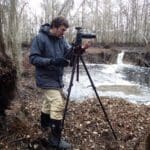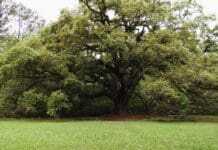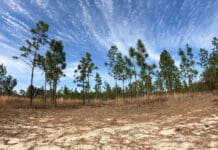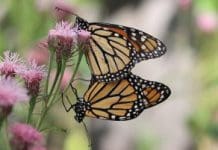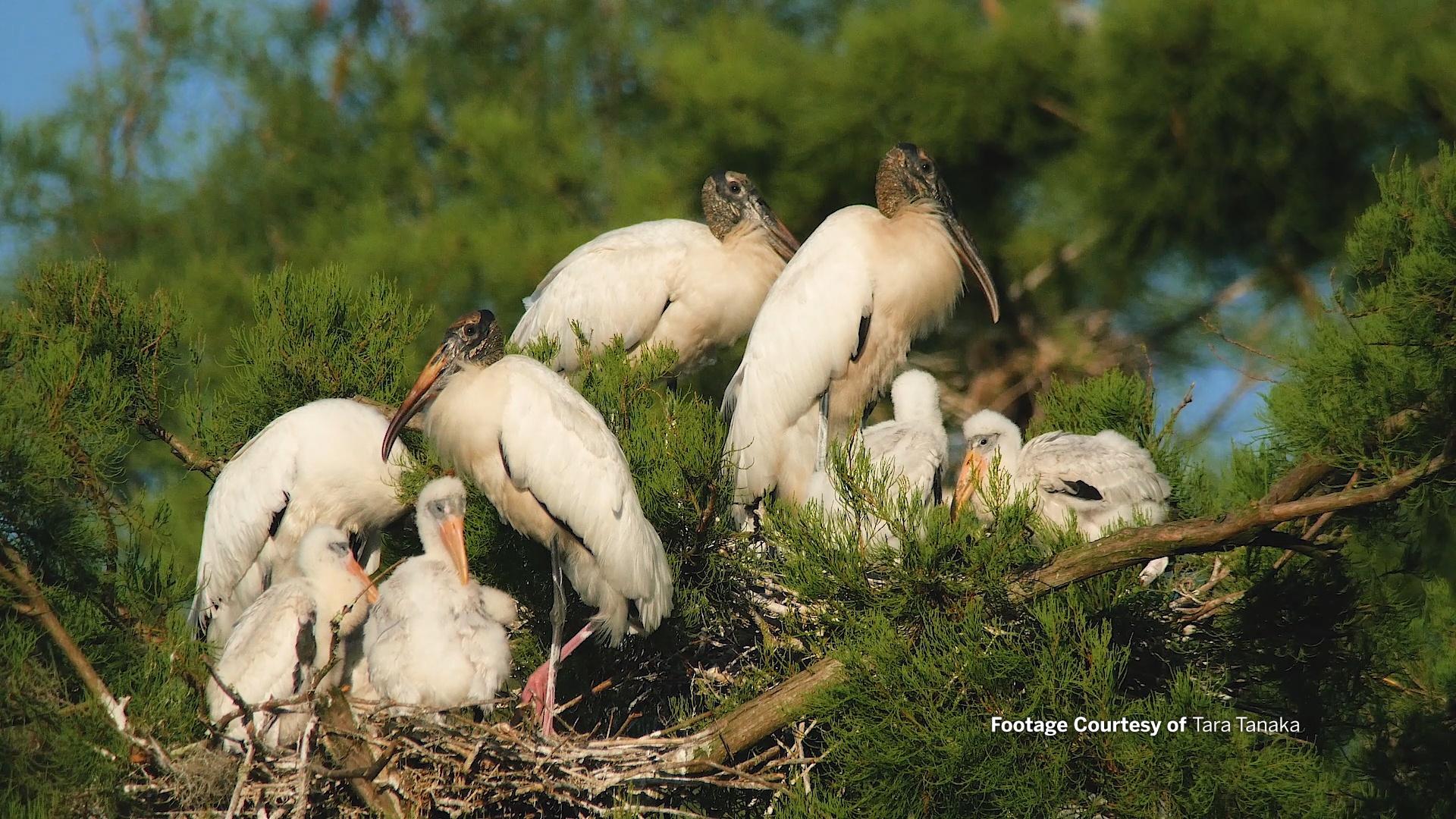

In late spring and early summer, wood storks and other wading birds head to rookeries to nest. To see one, we head into a cypress swamp owned by a married couple, who manage it as a preserve. The segment was edited and co-produced by Carlee Soeder.
In general,” Jim Stevenson says, “it is easy to manage a swamp.”
The swamp to which Jim refers is his backyard. For his wife, Tara Tanaka, it’s a photographer’s dream. Two duck blinds let her observe animals visiting directly behind their house. She also keeps the sliding door clean, and a camera attached to a birding scope is always ready to capture whatever happens by. One morning, it was a bobcat carrying a wood duck. Other days, there could be hundreds of wading birds foraging in shallow water. This includes ibis, roseate spoonbills, egrets, herons, and the animal that brings us here, the wood stork.
But they didn’t purchase 45 acres of cypress swamp simply to take amazing photos and videos. Jim, a retired biologist with the state park service, wanted to protect what he saw as an important ecological resource. We’re wading in with him to take a look.
Read the rest of this article by clicking here or by heading to wfsu.org/ecologyblog.
Rob Diaz de Villegas is a senior producer for television at WFSU Public Media, covering outdoors and ecology. After years of producing the music program OutLoud, Rob found himself in a salt marsh with a camera, and found a new professional calling as well. That project, the National Science Foundation funded "In the Grass, On the Reef," spawned the award-winning WFSU Ecology Blog. Now in its tenth year, the Ecology Blog recently wrapped its most ambitious endeavor, the EcoCitizen Project.
Rob is married with two young sons, who make a pretty fantastic adventure squad.

